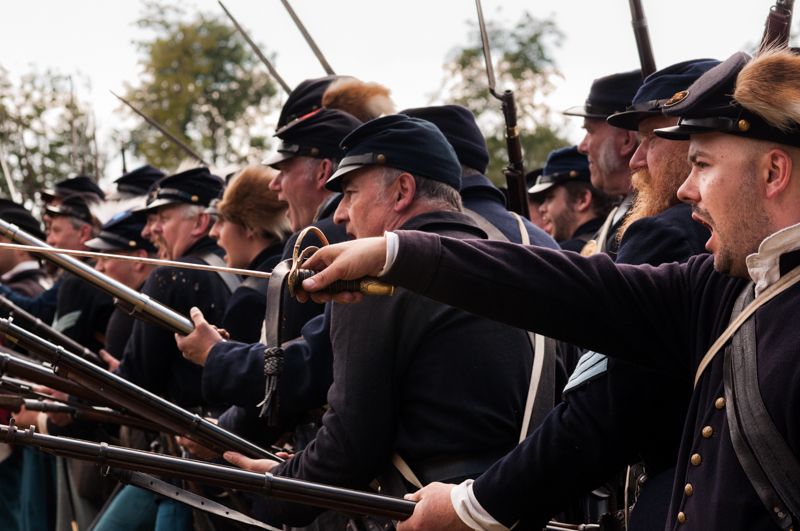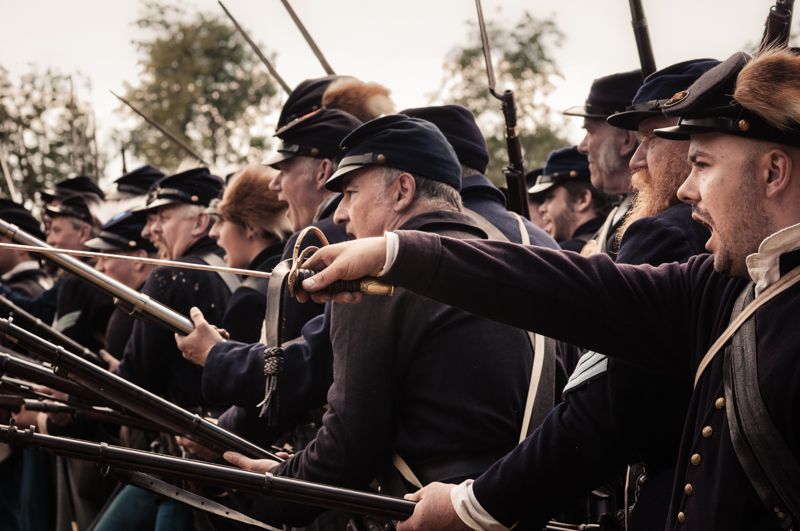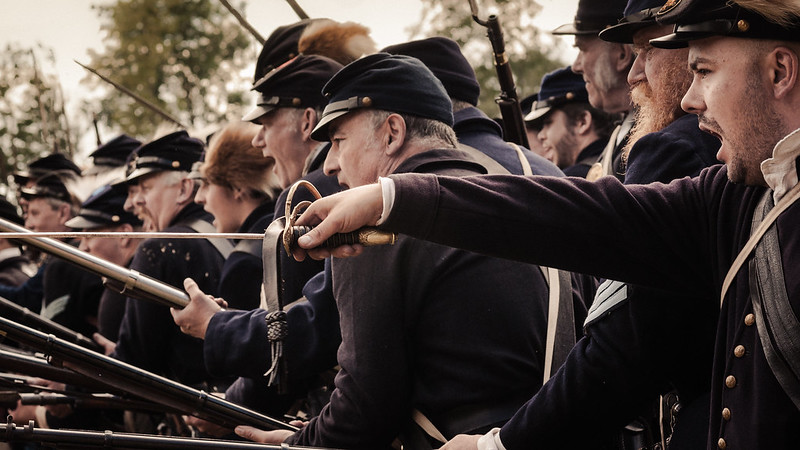Okay, pretty thorough one here:
First of all, much as when you take a photo, you must also think on how you want to approach your visual style when post-processing. No joke, digital post-processing is half of making a good photo. While you can never polish a turd (trust me, I've tried, if you fail the points of a good photo then nothing is going to save you) it's incredible how much you can add to a photo that initially looks a little lifeless. Ansel Adams said that his photos were made in the darkroom. Who am I to argue?
When I'm looking at a photo, figuring on the style, I've got a folder system running in my brain...
Street Photography:
Colour -
Martin Parr - garish colours, flat lighting.
Majiec Dakowicz - Unfussy, standard digital, little bit of clarity.
Partick Joust - Lucious darks, glowing colours, earthy tones.
Black & White:
Henri Cartier Bresson / Walker Evans: Rough, medium contrast, unsharpened, simple light, documentary.
William Klein: Thick blacks, smeared, grainy, immediate, popping.
David Bruce: High contrast, angry, industrial.
Same with portraits:
Steve McCurry - Rich vibrant colours, amazing eyes, strong clarity, National Geographic.
Dan Winters - Delicate colours and light, porcelain skin, odd streak of powerful colour, refined.
Helmut Netwon - FETISH.
Or landscapes:
Stephen Shore - Colour, eggshell skies, warm light or overcast, low vibrancy, soft edges, very detailed.
Michael Ormerod - Black and white, punchy, hard, black and white, grainy. Fuck you, this is a landscape.
William Eggleston - Colour for its own sake. Father of colour. Deceptively simple. Lomo.
Constable
Lowry
Etc.
With Reenactment/Living History the questions become different, and more about aptness than personal feeling. You service the story rather than make it, it's surprisingly akin to documentary - only skewing to the fantasy of documentary. This is why I don't shoot US Civil War in sepia, or B&W. Sepia was the hallmark of cumbursome box cameras, and so only very formal portraits or unpeopled landscapes can work in this format. If you try it with action, there's an immediate mental jolt that ruins it. Same with B&W - that sort of film wasn't available then, so it looks too much a concious yet anachronistic choice. Spielberg initially wanted to shoot Saving Private Ryan in B&W, arguing that it was the medium it was recorded in. It wasn't until he met a veteran that he changed his mind. The veteran told him that for him the war had been fought in blazing colour, and pointed him towards colour Life images. Spielberg hit upon a fantastic blend with desaturated colour and added grain. It creates a direct, strong visual shorthand for faux-documentary and it's surprising how well it serves all periods of reenactments. It's distanced, but not too much - and it's this option I chose for the US Civil War.

Here's a US Civil War photo. As you can see, the people are decently exposed, but the sky is blown out. The image is also somewhat flat. It's also not one of my best - it's a little lacking. What can we do? How can I pimp this?
Well, first of all we need to set the white balance correctly so that we have a better notion of what we're dealing with. Auto exposure has rendered this shot a little too harsh and chill, so let's tweak it. The Daylight option is accurate, but I want a warmer feel, so I'm choosing Cloudy - despite the day being quite sunny. For an accurate colour cast you can also select the dropper tool and click on a neutral white or grey colour. I opt to warm it a little further by sliding the temp slider just a few kelvin to the right.
Now let's retrieve those highlights. The best way is not by decreasing exposure but by pulling back on the hightlights - to the left. However, we don't want to diminish the highlights in the bulk of the image, such as the mild glint of the sword. So, let's work with the ND Grad. We click and drag it from the top. By opting for a drastic change, such as darkening by three stops, you can see which area it covers. Now, let's pull the highlights back until we get a hit of blue in that sky. You can see from the histogram above the tool bar the detail you recover. You'll see the burnt out peak of white clipping the right edge, pull back the highlights and you'll get a sharp peak free of the border.
The overexposure has damaged the transition from dark to light however, rendering the trees ugly. Let's knock down the clarity. Out with the brush, select clarity to -40 and then take off another twenty to compensate for a later adjustment we'll be making, hit 'o' to see what we're painting and get to work. Make sure Auto-Mask is selected, so it knows not to run over the hats and the bayonets. You'll have to do some tidying with the erase and repaint with a smaller brush, natch.
Ahh... that's better:

Now we want to add a bit of clarity to the overall image. If we add +20 we get a nice, not-too-showy but rather grittier effect on the soldiers. Clarity basically adjusts local contrast - upping the grit and the sharpness of the lines without messing the exposure too much. It is the most delicate of tools to my mind, as decreasing too far makes a horrible airbrushed image, while too far (unless in B&W) gives it a fake Zack Snyder HDR look. So plus 20 it is.
Now let's get to work with our exposures. Let's darken the blacks a touch, make it moodier. You can see as we pull back on them the left hand side of the histogram drifts to the left border. If you hit 'J', areas of blue (for pure black) and areas of red (for pure white) will show zones of lost detail. You can get away with loss of shadow detail, but burnt our whites are a problem.
Let's pull the shadows back as well by a few points, and now up the whites by a few. Finally, for a little more punch we add +15 or so to contrast. You may have to dial Highlights back as you do this, or lessen the darks, as contrast will push the exposures either way.
Looking good. Now we want to add a little oomph to the sword. By clicking on the Tone Curve button and then on the dark flat of the sword and pulling down, we increase the shadow a smidgeon, making the light side stand out better. This will handily effect similar metal in the photo.
It's time to start picking out the details that make this shot. We turn once again to clarity. First, make out what the eye is drawn to and accentuate it. The eye first lands on the sword, follows it past the hilt and along the arm to the officer on the extreme right shouting. Let's add with the brush some clarity to him. We paint his body with +15, and then add a culmative +15 to his face. We then work on the rifles of the two nearest men, and their faces, with +10. (One thing, culmative brushes of +10, +10, etc have less effect than a simple +20, which makes for more subtle boosting.)
We then give the buttons a little +10 polish, for extra points the eye can land on while drifting around the photo.
Ah ha - all nice and punchy now:

Time to think about colour. I like to desaturate Private Ryan style, so I pull saturation down by about -35. It's personal preference really. It pales the faces a little, making them look scareder, more haggard!
We then add a colour wash. Highlights and shadows I set to yellow, and add a few percent. If the trees were bare I'd go for a more wintery blue, but I want an evening light here. I then up the Orange channel saturation by + 35 to add colour to the hilt and the hats, but move the skin tone (red) by about -50 to really pale 'em. If you up vibrance you'll increase saturation on the bright, rich colours but avoid skin adjustments, whilst saturation effects everything. Therefore upping vibrance and lessening saturation can have a good effect. Or vice versa!
Finally we tweak a little until we're satisfied before doing our final two adjustments. A subtle vignette focuses attention on the sword. Then, we sharpen. Leave this until last, it saves processing power and has a cleaner look.
There's four settings to sharpen. Amount is self explanatory, I don't recommend above +60 and I rarely go above +35. Radius increases the contrast and punch of the main edges, such as of heads, arms, architecture. It's good for splitting up a crowd of jostling limbs, but not so great for complex delicate images. Detail adds edge to the individual hairs and fibres and such - great for animals and landscapes. Masking as it is increased mountingly forbids the addition of sharpness to out of focus areas, until at 100 every remains unsharpened.
With the crowd in the background I hit Radius to + 1.7, amount to +35, detail to +35 and masking to 79 to account for me wanting to keep the rest of people further back out of focus.
Much better:

Finally, you know what, fuck it? I want to fix two things. I hate the jagged edge on the sword. This can be a problem with high contrast objects having chromatic aberations removed. Also, I want to make it more dynamic. Let's get in way closer. Let's tilt things to add the momentum of a charge. Let's really make that sword pointing at some fucking cornfed's heart.
Load the 16:9 shot! CHARGE!

And that's how I Lightroom.

Big image version here:
http://www.flickr.com/photos/nervouspet ... /lightbox/
